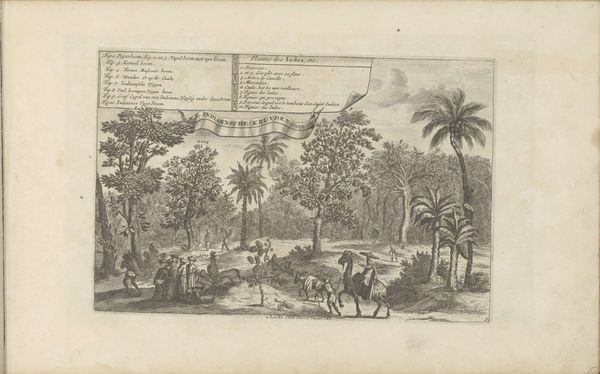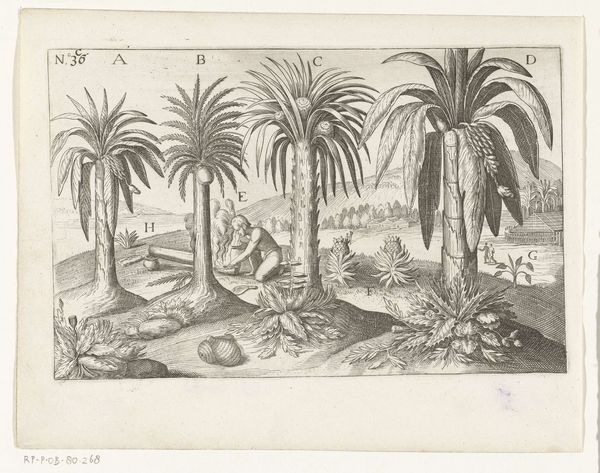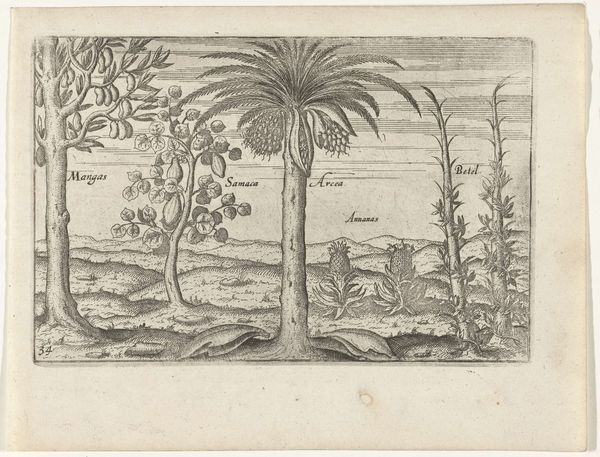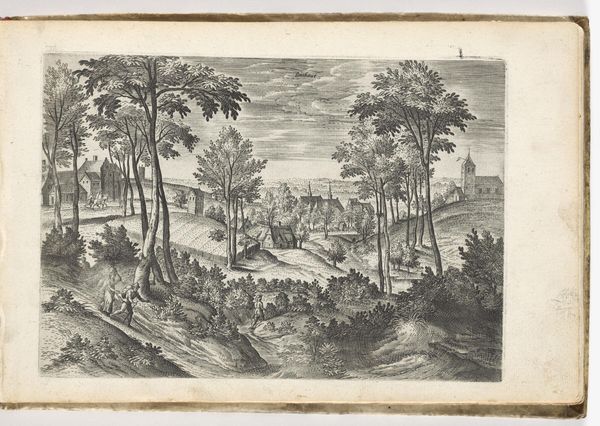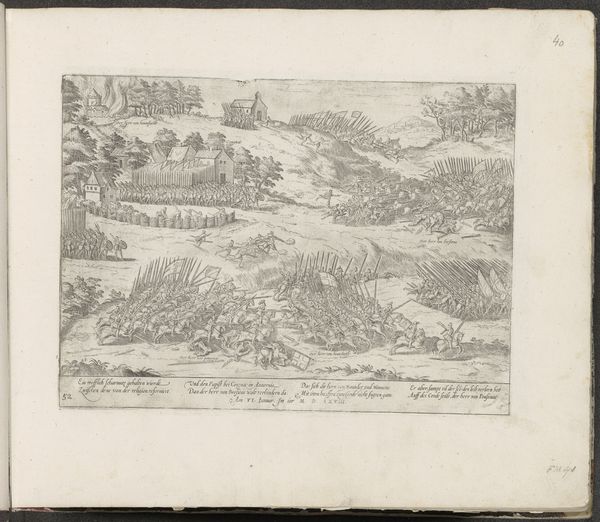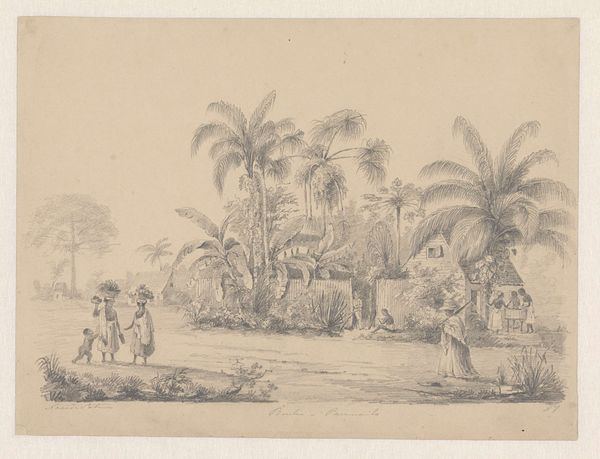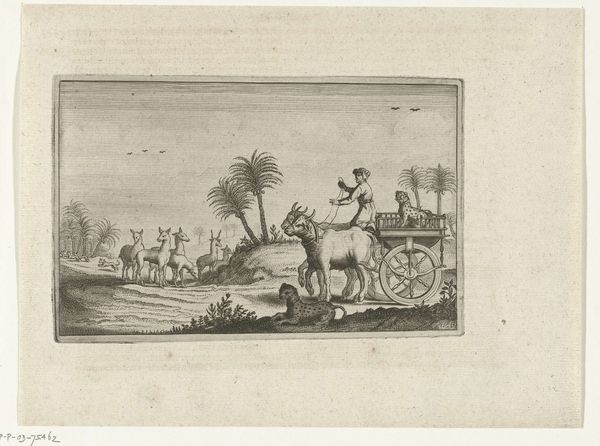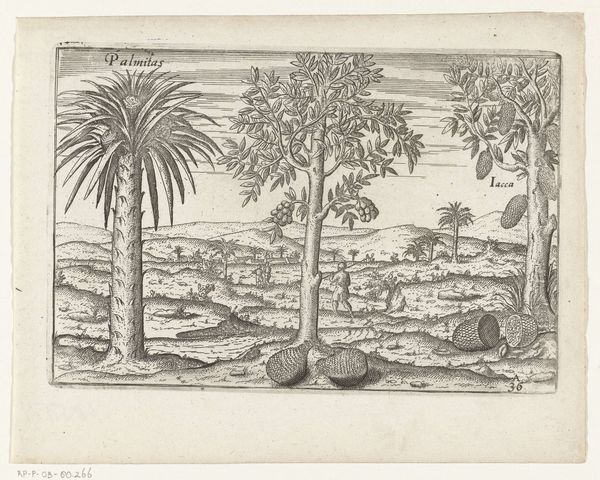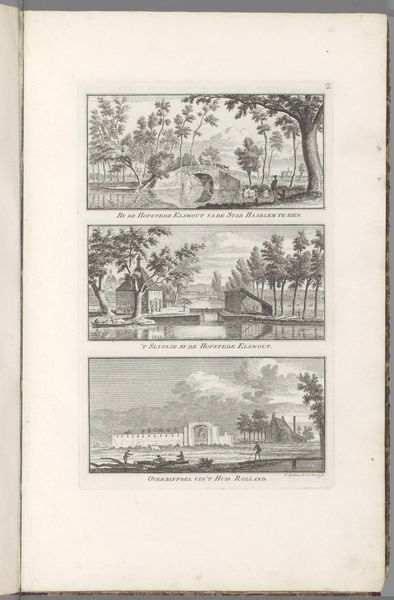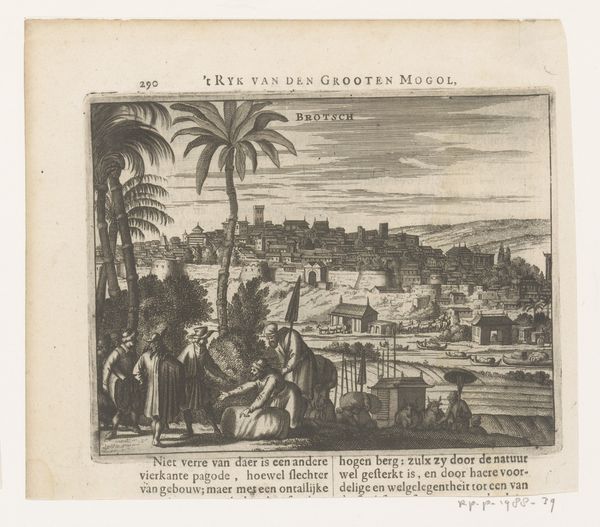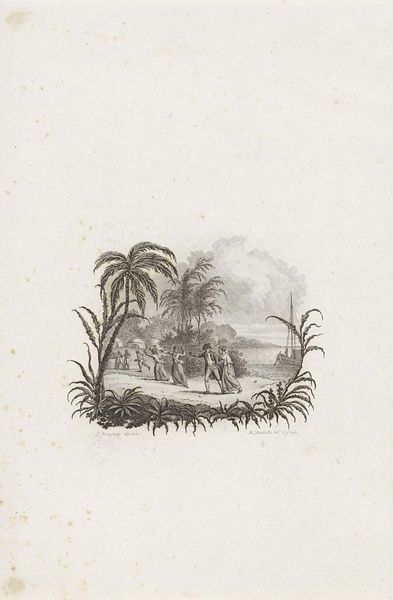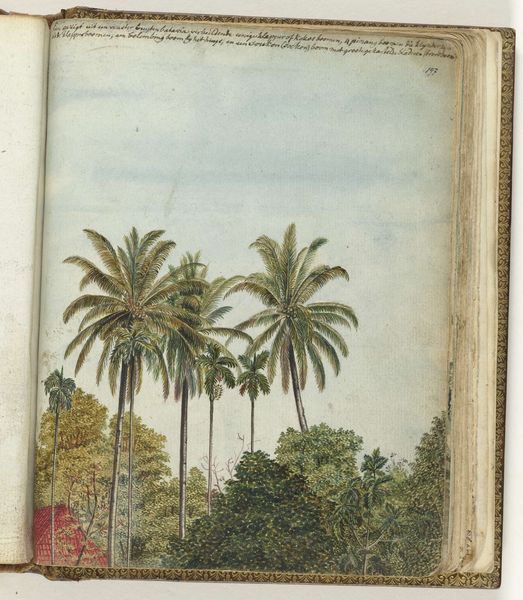
print, etching, engraving
#
baroque
# print
#
etching
#
landscape
#
engraving
Dimensions: height 165 mm, width 137 mm, height 164 mm, width 138 mm
Copyright: Rijks Museum: Open Domain
Romeyn de Hooghe created this print of mango, coconut, and palm trees sometime between 1660 and 1708. But what does it tell us? As a historian, I'm interested in the ways this image reflects the Dutch colonial presence in Java, now part of Indonesia. The print is divided into two scenes depicting different types of trees and activities. On the left, figures are harvesting mangoes, while on the right, people stroll among palm trees. The text above each scene identifies the fruits and trees of Java, providing a sense of scientific documentation. However, it's important to remember that this image was created within a specific context. The Dutch East India Company controlled Java at the time, exploiting its resources and people. De Hooghe's print, with its emphasis on exotic fruits and orderly landscapes, could be seen as promoting a particular view of the colony. By consulting historical documents, such as company records and travelogues, we can gain a deeper understanding of the complex relationship between art, colonialism, and the representation of other cultures.
Comments
No comments
Be the first to comment and join the conversation on the ultimate creative platform.
